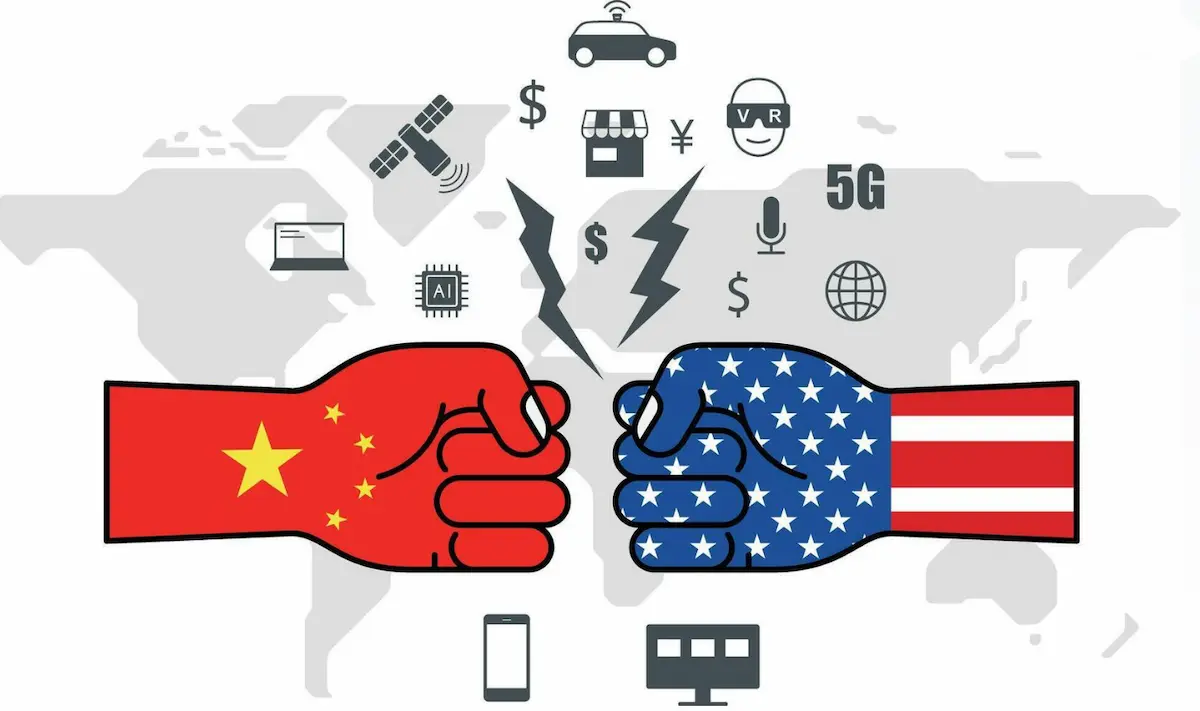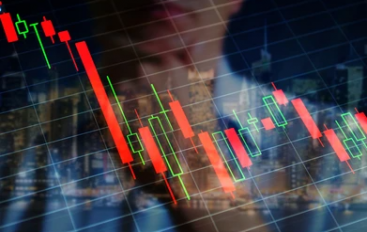In early 2025, President Donald Trump’s reinstated tariff regime shook the foundations of global supply chains. With sweeping duties—10% to 25%—on goods imported from China, the administration aims to bring manufacturing back to the U.S., reduce reliance on Chinese imports, and push for better trade terms. But history—and corporate ingenuity—suggests that when tariffs rise, workarounds evolve. Explore how Chinese firms might invest in countries like South Korea, Singapore, and Israel to legally navigate Trump’s 2025 U.S. tariffs through transformation manufacturing.
Enter a rising strategy: Chinese companies investing in third countries with comprehensive U.S. free trade agreements—such as South Korea, Singapore, and Israel—to perform final assembly or transformation. While tariff circumvention is illegal when goods are rerouted without substantial transformation, rules of origin provide legal grey areas that companies may exploit to lawfully reduce costs.
This blog explores potential scenarios of legal circumvention, geopolitical and economic implications, and how procurement leaders—like Mattias Knutsson—see these developments shaping the future of global manufacturing.
The Legal Line — What Constitutes Circumvention?
Definition:
- Tariff Circumvention: Routing goods through third countries without meaningful transformation to avoid duties. This violates customs regulations and may trigger enforcement actions.
Legal Route:
- If a product undergoes “substantial transformation”, it can qualify as originating from a new country under Rules of Origin in trade agreements.
Example: Assembling a laptop in China, but adding the motherboard, final casing, software installation, and packaging in South Korea may meet transformation standards under the U.S.-Korea Free Trade Agreement (KORUS).
U.S. Tariffs Strategic Investment Targets — Where China May Build
Top U.S. Free Trade Partner Countries Considered for Transformation Hubs:
| Country | FTA Status | Labor Cost Index (1-10) | Tech/Logistics Rating | Risk of Enforcement |
|---|---|---|---|---|
| South Korea | Comprehensive (KORUS) | 5 | High | Low |
| Singapore | Comprehensive | 6 | Very High | Low |
| Israel | Comprehensive | 4 | Medium | Low |
| Mexico | USMCA | 3 | High | Medium |
| Vietnam | No FTA with U.S. | 2 | Medium | High |
While Mexico and Vietnam are popular reshoring destinations, FTA nations like South Korea, Singapore, and Israel offer legal trade channels and established high-tech infrastructure, albeit at slightly higher labor costs.
Hypothetical Business Scenarios
Scenario A: Smartphone Final Assembly in South Korea
- Chinese Manufacturer: A leading smartphone company faces a 15% tariff on direct U.S. imports.
- Action: Ships semi-knocked-down (SKD) kits to Busan, South Korea.
- Transformation Activities: Installs CPU, memory, and display. Completes software install and packaging.
- Result: Under KORUS, products are labeled “Made in Korea” and shipped to U.S. tariff-free.
Scenario B: High-End Electronics Routed via Israel
- Product: Home automation hub made in Shenzhen.
- Transformation: Israeli partner adds firmware and cloud-based software services in Tel Aviv.
- FTA Benefit: Exempt from tariffs under U.S.-Israel Free Trade Agreement.
- Legal Shield: The final good now contains intellectual property created in Israel, qualifying it as an Israeli origin product.
Scenario C: Medical Device Assembly in Singapore
- Product: Diagnostic equipment (e.g., blood analyzers).
- Supply Chain: Components produced in China, sent to Singapore for integration, calibration, testing, and firmware installation.
- Outcome: “Substantial transformation” threshold met under U.S.-Singapore FTA, avoiding a 20% tariff.
Grey Zones & Enforcement Risks
U.S. Customs and Border Protection (CBP) Enforcement:
- Increased Inspections on transshipped goods from known hubs like Singapore and Mexico.
- Origin Verification Audits on high-value electronics and medical equipment.
- Use of AI-powered traceability tools to detect origin anomalies.
Potential Penalties:
- Seizure of goods
- Retroactive tariff application
- Civil or criminal penalties for misdeclaration
Business Incentives and Labor Realities
Though South Korea and Singapore have higher labor costs, they offer:
- Skilled, tech-oriented workforce
- FTA protections
- Logistical efficiency
- Low corruption and strong IP enforcement
For high-value goods, the incremental cost of transformation is outweighed by tariff savings. Example:
| Product | Unit Cost in China | Tariff Rate | Unit Cost Post-FTA Routing | Net Savings |
|---|---|---|---|---|
| $600 smartphone | $600 | 15% ($90) | $635 (with Korea transformation) | $55 |
How U.S. Tariffs Affects Global Supply Chains
Winners:
- FTA-aligned economies (SK, SG, Israel) attracting new investment.
- Chinese firms with the capital to build international infrastructure.
- Procurement specialists skilled in navigating rules of origin and compliance.
Losers:
- U.S. importers who rely on less flexible partners.
- Small businesses unable to diversify supply routes.
- Domestic manufacturers facing FTA-compliant but foreign-assembled competition.
The Ethical and Strategic Debate
While technically legal, the practice of “transformative routing” challenges the spirit of Trump’s U.S. tariffs policy. Critics argue it undermines domestic industry, while defenders view it as smart globalization within existing laws.
Mattias Knutsson’s Strategic View
Mattias Knutsson, an influential global procurement strategist, addressed this topic at the 2025 Global Supply Chain Forum in Tokyo:
“These transformation hubs represent a new chapter in the evolution of global supply chains. This isn’t cheating—it’s adapting. The real question is whether governments can keep up with corporate agility.”
Knutsson’s Key Recommendations:
- Know the Rulebook:
Deep familiarity with FTA origin rules is now a core competency. - Invest in Traceability:
Use digital twin systems to prove substantial transformation for compliance and audits. - Prepare for a Patchwork World:
Expect rising regulatory nationalism and develop multi-country production footprints. - Balance Speed with Scrutiny:
Aggressive rerouting can cut costs but comes with legal and reputational risk.
“You can’t tariff-proof your supply chain, but you can make it flexible enough to survive turbulence,” Knutsson concluded.
Conclusion:
As Trump’s 2025 U.S. tariffs reshape trade flows, Chinese companies are unlikely to sit idle. Instead, they are leveraging FTA loopholes, third-country processing, and strategic investment to keep goods flowing into the U.S. market.
The world is watching as this game of trade chess unfolds. Countries like South Korea, Singapore, and Israel stand to benefit economically, even as U.S. regulators ramp up scrutiny. Meanwhile, procurement professionals, supply chain strategists, and policymakers must adapt to a new era of geopolitical commerce, where agility, legality, and optics must all be carefully balanced.
If companies play by the rules—and get creative with transformation thresholds—they may find ways to legally leap over tariffs that were meant to hold them back.
Trumps Tariffs Trade War Series:
Historical Background
- From Protection to Prosperity: The Role of Tariffs in Financing Early America
- The Tariff Battles of the 19th Century: Industrial Growth and Political Divide
- How Tariffs Built Railroads, Factories, and the American Dream (1800–1912)
Background to Today’s Tariffs
- From Smoot-Hawley to the WTO: A Century of Trade Policy Shifts
- The Rise of Free Trade and the Decline of Tariffs: 1945 to 2000
- The Tariff Comeback: Why Tariffs Returned as a Political Weapon in the 21st Century
Trump Tariffs Deep Dive: Trade Wars with the EU, China, and Beyond
- Trump’s Tariff Strategy: National Security or Economic Gamble?
- EU Under Pressure: Wine, Steel, and the Automotive Tariff Threat
- The U.S.-China Trade War Timeline: From Tariff Waves to Tech Decoupling
- Collateral Damage: How Trump Tariffs Affected Mexico, Canada, India, and Japan
Country-by-Country Response Monitoring: Reactions to Trump’s 2025 Tariff Hike
- China Strikes Back: Export Controls, Rare Earths, and Consumer Tech Retaliation
- European Union’s Balancing Act: Strategic Patience or Trade Fight Ahead?
- Japan and South Korea: Strategic Allies or Silent Rivals in Tariff Diplomacy?
- ASEAN & India: Winners or Losers in the Tariff Shuffle?
- South America’s Role in a Polarized Trade World
Ongoing Monitoring and News Reaction: Tracking Trump’s Tariffs in Real-Time
- Week-by-Week: The Global Market Reaction to Trump’s 2025 Tariff Policy
- U.S. Companies Caught in the Crossfire: How Businesses Are Adjusting to Tariff Shocks
- From Retail to Rare Earths: Key Sectors Most Affected by New Tariffs
- Trade Talks Tracker: Are New Negotiations a Signal of Resolution or More Chaos?
- Inside the Beltway: How Congress, Lobbyists, and Think Tanks are Shaping the Tariff Narrative





